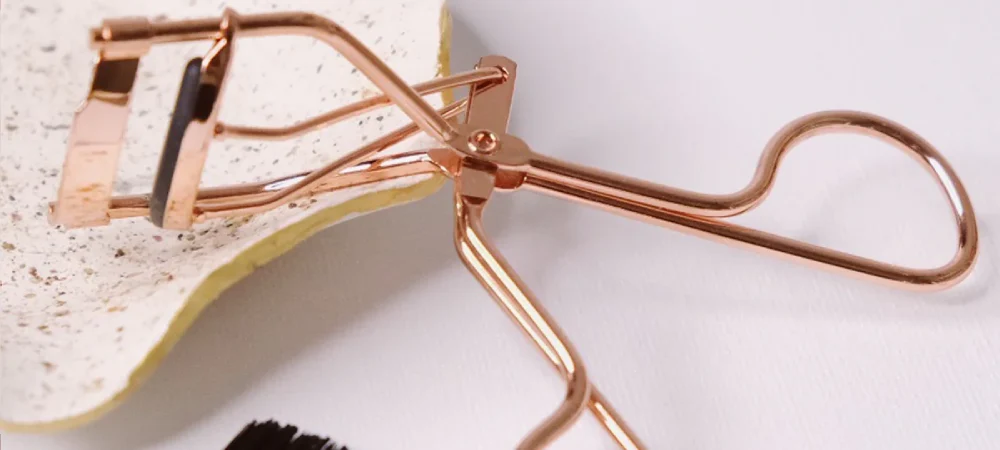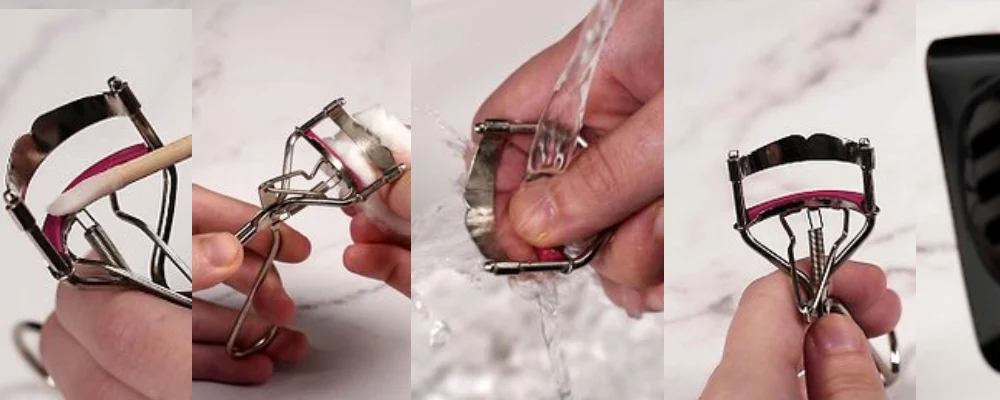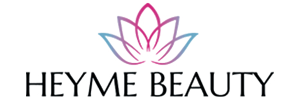![]()
Let’s be honest — how often do you actually clean your eyelash curler?
If your answer is “almost never,” you’re not alone. Most people wipe off visible mascara and call it a day. But here’s the truth: your eyelash curler is one of the most bacteria-prone tools in your beauty bag.
As an eyelash curler manufacturer with over a decade of experience, we’ve studied everything — from the materials that make a curler last longer, to how hygiene directly impacts lash health and curling performance. What we found shocked even professionals: up to 70% of curlers used for over a month without cleaning contain bacteria colonies strong enough to cause eye irritation, lash loss, or infection.
That’s why cleaning your eyelash curler isn’t just about keeping it shiny — it’s about protecting your eyes and ensuring your curler performs like new, every single time.
In this in-depth guide, we’ll show you exactly how to clean an eyelash curler the right way, step-by-step — the same way professionals and manufacturers do it — so you can enjoy safe, stunning, salon-quality curls every day.

Why Cleaning Your Eyelash Curler Is So Important
Imagine curling your lashes with a tool that’s coated in mascara residue, oil, and dust. Not only does it feel gross, but it’s also dangerous. The curler comes in direct contact with your lash line — an area with some of the most delicate skin and hair follicles on your body.
Let’s break down what happens when you skip cleaning:
Bacteria Build-Up
Every time your curler touches your lashes, it picks up oils, mascara particles, and even microscopic skin cells. Over time, this mix turns into a perfect breeding ground for bacteria. When these bacteria get near your eyes, they can cause redness, irritation, or even infections like conjunctivitis.
Lash Damage and Breakage
A dirty curler pad loses its grip and smoothness. When that happens, lashes can stick, pull, or snap off. Repeated use of a dirty tool not only shortens lash life but also makes the curl uneven and weak.
Product Transfer
If you use your curler after applying mascara, leftover residue hardens on the pad and transfers back to your lashes the next time. That buildup can clump your lashes, weaken the curl, or even flake into your eyes.
Shortened Tool Lifespan
Neglecting to clean your curler also shortens its life. The metal parts corrode faster, rubber pads stiffen, and the hinge may lose its smooth movement. A simple cleaning routine can easily double your curler’s lifespan.

The Professional Standard: How Often Should You Clean Your Eyelash Curler?
This is one of the most common questions we get from salons and retail customers alike.
Our manufacturer-recommended cleaning frequency is simple:
| Usage Frequency | Cleaning Recommendation |
|---|---|
| Daily (makeup artists, salons) | Disinfect after every client or use |
| Personal daily use | Quick wipe after each use; deep clean weekly |
| Occasional use (2–3x/week) | Clean every 3–4 uses |
Think of your curler the same way you think of a toothbrush — it touches your face daily and deserves regular care.
What You’ll Need: Professional Cleaning Tools
Before diving into the cleaning steps, let’s get your cleaning station ready. You don’t need fancy salon equipment — just a few essentials:
Basic Cleaning Supplies
- Mild liquid soap or facial cleanser
- 70% isopropyl alcohol (for disinfection)
- Cotton pads or Q-tips
- Soft microfiber cloth
- Warm water
- Small brush (like a toothbrush or lash spoolie)
- Tweezers (optional for removing stubborn debris)
For Deep Cleaning
- Silicone-safe disinfectant spray (if your pad is medical-grade silicone)
- Replacement rubber pads (every 1–3 months)
- A small towel to dry the tool completely
Manufacturer’s Tip: Avoid using acetone or harsh cleaners — they can damage silicone pads or dull the metal surface.
Step-by-Step: How to Clean an Eyelash Curler Like a Pro
Step 1: Remove Residue After Each Use
Before you even start washing, wipe off any visible mascara or makeup using a dry tissue or cotton pad. This quick step prevents buildup over time. If the residue is sticky, slightly dampen the cloth with warm water.
Step 2: Deep Clean Weekly
For a more thorough cleaning (which we recommend weekly), follow these steps:
- Remove the Rubber Pad
Most curlers have a detachable silicone or rubber pad. Gently pull it out using your fingers or tweezers. This allows you to clean both the pad and the metal frame separately. - Wash the Metal Frame
Fill a small bowl with warm water and add a drop of gentle soap or cleanser. Dip a soft brush or cotton pad into the solution and scrub the curler, focusing on the areas near the hinge and clamp. Rinse it with warm water and dry it completely with a soft towel. - Clean the Silicone Pad
Wash the pad separately with soap and warm water. Be gentle — you don’t want to stretch or deform it. Pat dry with a clean towel. - Disinfect
Dampen a cotton pad with 70% isopropyl alcohol and wipe both the curler and pad thoroughly. This kills bacteria without harming materials. - Reassemble Once Fully Dry
Never reattach a wet pad — moisture can promote rust or bacterial growth. Wait until everything is completely dry before putting your curler back together.
Step 3: Replace Pads Regularly
Even with perfect cleaning, pads wear out. The silicone gradually flattens, reducing pressure and control. Most professionals recommend replacing pads every 6–8 weeks, depending on use.
When your pad starts looking shiny, stiff, or cracked — it’s time to change it. Using old pads risks lash breakage and uneven curls.
Insider Fact: Our in-house testing found that fresh pads improve lash lift by up to 25% compared to worn ones.
Special Cleaning for Heated Eyelash Curlers
If you’re using a heated eyelash curler, your cleaning method will be slightly different since it includes electrical components.
Step-by-Step:
- Turn off and cool down completely before cleaning.
- Never submerge in water. Instead, use a dry or slightly damp microfiber cloth to wipe the surface.
- Use a cotton swab with alcohol to clean the heating comb or silicone head.
- Allow it to air-dry fully before reattaching the cap or turning it on again.
Manufacturer Safety Warning:
Avoid spraying cleaning liquids directly onto the device — even small amounts of moisture inside the heating mechanism can cause damage or short-circuiting.
What Happens When You Don’t Clean Your Eyelash Curler
It’s easy to underestimate the impact of skipping this step — until something goes wrong.
Here’s what can happen:
- Clogged Residue → Lash Pulling:
Hardened mascara causes lashes to stick and rip when you curl. - Bacteria Build-Up → Eye Irritation:
Redness, styes, or itching often come from contaminated tools. - Rust and Stiffness → Shorter Lifespan:
Metal oxidation makes hinges squeaky and hard to control. - Loss of Grip → Weak Curl:
A dirty pad won’t hold the curl properly — no matter how many times you press.
In short, a dirty curler doesn’t just look bad — it ruins your results and risks your health.
Manufacturer’s Maintenance Checklist
| Task | Frequency | Why It Matters |
|---|---|---|
| Quick wipe with tissue | After every use | Removes fresh residue |
| Wash with soap + water | Weekly | Prevents buildup and bacteria |
| Disinfect with alcohol | Weekly | Keeps it hygienic |
| Replace silicone pad | Every 6–8 weeks | Maintains pressure and performance |
| Full metal check (hinge, spring) | Every 3 months | Detects corrosion or wear |
| Replace the whole curler | Every 6–12 months | Ensures safe, precise curling |
Following this schedule guarantees both hygiene and performance longevity — two things we value deeply in every product we design.
How Professionals Keep Curlers Hygienic
At the manufacturer and salon level, there are strict hygiene standards.
Here’s how professional lash artists handle their tools:
- Single-Use or Disinfected Tools:
Some high-end salons even use individual curlers per client or sterilize them in UV boxes after each use. - Medical-Grade Cleaning Agents:
Professionals use antibacterial sprays safe for silicone and metal. - Regular Pad Replacement Stock:
Each workstation has spare pads to ensure no tool is used past its lifespan. - Visual Inspection:
Before every client, they check for rust, discoloration, or pad deformation.
These same habits are easy to apply at home — and they’ll dramatically improve both hygiene and lash results.
Customer Stories: Real Results After Proper Cleaning
“I used to think cleaning was optional — until I noticed my lashes breaking. After following your weekly cleaning routine, my lashes look healthier and my curler works like it’s brand new.”
— Jessica L., USA
“As a salon owner, hygiene is everything. We follow your manufacturer cleaning guide, and our clients always comment on how comfortable and safe their lash services feel.”
— Aiko Tanaka, Tokyo Lash Studio
“I didn’t realize my pad was three months old! Replacing it after your article completely changed the curl quality.”
— Maria G., Spain
These real-world experiences prove one thing: clean tools create better beauty — every time.
FAQs
Can I use makeup remover to clean my eyelash curler?
You can, but it’s not the best option. Many makeup removers—especially oil-based ones—leave a slippery residue that can transfer to your lashes or pads. This residue can reduce the grip and affect curling performance. Instead, use gentle soap and warm water for everyday cleaning, and wipe the curler with rubbing alcohol for a squeaky-clean, non-greasy finish.
How can I prevent rust on my eyelash curler?
After every wash, dry your curler completely with a soft towel. Moisture is the main cause of rust. You can also store it in a dry, cool place away from your bathroom sink. For extra protection, place a small silica gel packet in your makeup bag—it helps absorb humidity and keeps your curler in top shape longer.
Do I need to sterilize my curler like salon tools?
If you’re the only one using it, a quick weekly disinfection is enough. Simply wipe the metal and silicone pad with an alcohol pad or spray. However, for professional or salon use, stricter hygiene is essential—each client’s curler should be sanitized with professional disinfectant or replaced to avoid any cross-contamination.
What should I do if the pad smells or looks discolored?
If you notice any unusual smell, sticky residue, or color change on the pad, it’s time for a replacement. These are clear signs of bacteria buildup or silicone degradation. Using a worn pad can damage your natural lashes or cause uneven curling—so change it every 2–3 months for best results.
Can I put my eyelash curler in boiling water to sterilize it?
No, boiling isn’t recommended. High heat can damage the spring tension, warp the metal frame, or melt the silicone pad. Instead, clean the curler with warm soapy water and then disinfect it using an alcohol solution or antibacterial wipe. This keeps it hygienic without ruining its structure.
Conclusion
At the end of the day, the secret to healthy, stunning lashes isn’t just in your mascara — it’s in how you care for your tools.
Cleaning your eyelash curler regularly keeps bacteria away, maintains curling performance, and protects your lashes from unnecessary damage.
As a professional manufacturer, we’ve seen firsthand how a clean, well-maintained curler performs better, lasts longer, and builds user trust. The best beauty routines are not only about looking good — they’re about doing it safely and smartly.
So next time you finish curling your lashes, take one extra minute to clean your tool. Your lashes — and your eyes — will thank you.
